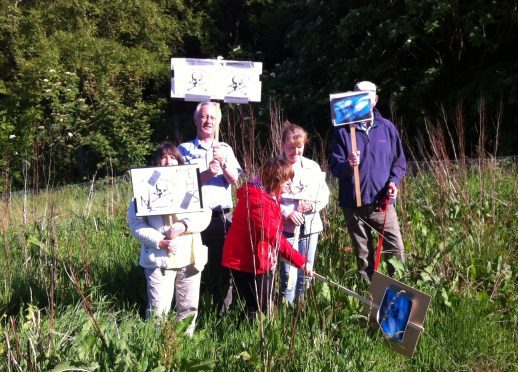Community chiefs have called for a polluted Aberdeen waterway to be fenced off with skull and crossbones warning signs erected around it.
Torry Community Council secretary David Fryer said the local authority had “failed” the area over the cyanobacteria outbreak at East Tullos Burn which runs through St Fitticks Park.
Residents had complained of the strong smell from the burn and suspected there had been a sewage leak with some reporting seeing human waste.
But investigations by the Scottish Environment Protection Agency (Sepa) and Scottish Water have since determined that the substance is cyanobacteria – also known as blue-green algae.
The scum is known to cause stomach and skin problems if it comes in contact with the body or is ingested.
But last night Mr Fryer said the council now need to seal off the area adding that the warning signs in place were “inadequate”.
He said: “In the old West they would erect a skull and crossbones around polluted water holes so people knew not to go near them.
“What the council have done is put up this small signage but what use is that to small children or dogs?
“This water is hazardous and there is a strong feeling in Torry that if this had happened in another part of the city the council would be doing more to tackle it.
“We have heard they will monitor the situation but we need robust assurances here.”
Catriona McKenzie, a councillor for Torry and Ferryhill, said she was urgently seeking a meeting with SEPA.
She said: “There are serious concerns and I think there needs to be consideration of re-testing the site.”
A council spokeswoman said: “During the course of the investigations, SEPA determined that the alleged pollution was a bloom of blue-green algae not sewage.
“Aberdeen City Council posted signs warning the public of the presence of blue-green algae, in order to protect public health.
“The algae does form into clumps in the water which could look like human excrement.
“We would like to emphasise the algae occurs naturally, usually when there is hot weather which we have had recently. It has not been caused by anything further upstream, despite rumours to the contrary.”
A SEPA spokeswoman said: “Although blue-green algal blooms can sometimes be attributed to excessive nutrient enrichment, they also occur as an entirely natural phenomenon in any freshwater or marine environment.”
